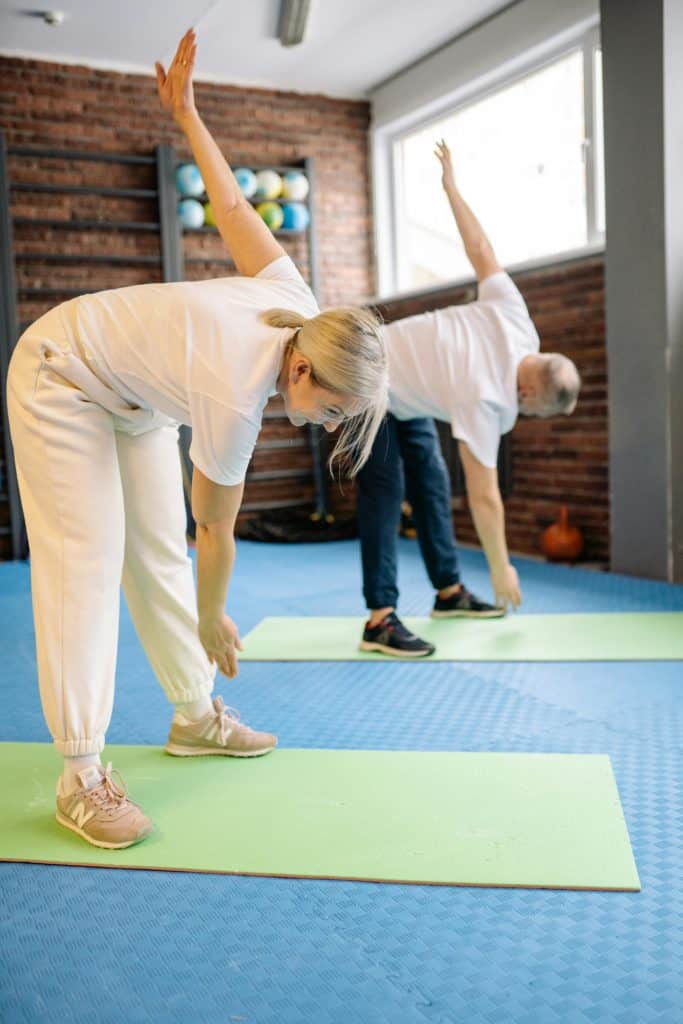Healing with the Arts: Exploring Art Therapy, Music Therapy, and Dance Therapy with CIT Consultant Heather McCowen
Heather V McCowen, PhD
College Consultant
College Inside Track
January 2024
Health science is the kind of field that draws students who are great at science and math and have a deep desire to help others. As we are lucky enough to live in 2024, we can help people take care of their bodies and solve health issues in ways our grandparents never dreamed of. As our world continues to learn more and more about how our minds and bodies are connected, we see the helpful ways that the arts can help heal as well.
For those who want to use their arts interests and their health fields’ interests, the fields of art therapy, music therapy, and dance therapy may be a satisfying and exciting path forward. This article will examine three different therapeutic majors/career paths in the allied health professions and potential college paths to get there. In the artist Georgia O’Keefe’s words, “I found I could say things with color and shapes that I couldn’t say any other way – things I had no words for.”
Art Therapy
“Art Therapy is an integrative mental health and human services profession that enriches the lives of individuals, families, and communities through active art-making, creative process, applied psychological theory, and human experience within a psychotherapeutic relationship.
Art Therapy, facilitated by a professional art therapist, effectively supports personal and relational treatment goals and community concerns. Art Therapy improves cognitive and sensory-motor functions, fosters self-esteem and self-awareness, cultivates emotional resilience, promotes insight, enhances social skills, reduces conflicts and distress, and advances societal and ecological change.” – from the American Art Therapy Association.
Erin Partridge, Ph.D., ATR-BC, an art therapist, shares this anecdote: “I have the honor of working with older adults in art therapy and as core searchers. The following quote comes from a Japanese-American survivor of the internment camps: “Years ago, your words of amazing wisdom: ‘Maybe you’d like to make a collage?’ Yes, I did make it, finally…In working on this collage, I began to see…I’ve lost much of that anger and resentment. I’ve been helped by collage, art, and you. And now, I have some good feelings about this, my collage. I like some of it. I feel good.”
This survivor sees art as a way to tell her story beyond her words and has created an exhibit of her drawings of the prison camps along with a framed news article about her experiences. Art therapy creates a space for her to process her past experiences and empowers her to continue to be an activist and an advocate; age does not exclude her from the conversation. The work of an art therapist opens doors to interactions with so many parts of the human experience. I feel so lucky to work with these dynamic people in the last decades of their lives; they inspire me and push me to be better, to think outside my own experiences, and to see the world from different perspectives.”
A Master’s degree is necessary for entry-level practice in Art Therapy. The educational standards require graduate-level coursework that includes training in:
- the creative process,
- psychological development,
- group therapy,
- art therapy assessment,
- psychodiagnostics,
- research methods, and
- multicultural competency development and cultural humility.
A variety of colleges across the country offer undergraduate coursework or majors in art therapy as pre-professional information. It is important to know that undergraduate coursework or a major in art therapy is not required to apply to graduate art therapy programs. However, such coursework at this pre-professional level can increase your confidence and provide a strong foundation for future studies. In addition, the courses offer an opportunity to explore the career further and determine whether it fits you!
Millikin University in Illinois offers a BFA in Art Therapy and a BA in Art with Art Therapy Coursework. Converse College in South Carolina offers the BA in Art Therapy; for a more urban environment, Temple University in Philadelphia offers the BA in Art Therapy via their Tyler School of Art, in connection with the Arts & Quality of Life Research Center, an innovative center that demonstrates the unique role of the arts in making a difference in peoples lives. It focuses on exploring the uses of various creative arts to enhance human functioning developmentally, intellectually, psychologically, socially, physically, aesthetically, and spiritually.
Art Therapy studies can be a way to apply your art in new and different ways. For a longer list of colleges that offer the undergraduate art therapy degree, please see this link on the American Art Therapy Association website.
Typically, the same guidelines for applying to art programs will apply. BFA programs will require a portfolio for admission, while the BA usually does not require it, or it is only recommended. That said, having a collection of your work available to show colleges in the admissions process is always a good idea, even if it’s not “required.” Start taking pictures of all your paintings, drawings, and sculptures now, and save (and back up!) your files to a Google Drive so you’re ready to go in the fall of your senior year with pieces for your digital portfolio.
Music Therapy
“Music Therapy is the clinical & evidence-based use of music interventions to accomplish individualized goals within a therapeutic relationship by a credentialed professional who has completed an approved music therapy program. Music therapy interventions can address a variety of healthcare & educational goals” – American Music Therapy Association.
The idea of music as a healing influence that could affect health and behavior is as old as the writings of Aristotle and Plato. The 20th century discipline began after World War I and World War II when community musicians of all types, both amateur and professional, went to Veterans hospitals around the country to play for the thousands of veterans suffering both physical and emotional trauma from the wars. The patients’ notable physical and emotional responses to music led the doctors and nurses to request the hiring of musicians by the hospitals. It was soon evident that the hospital musicians needed some prior training before entering the facility, so the demand grew for a college curriculum. The world’s first music therapy degree program was founded at Michigan State University in 1944. Sadly, Michigan State University no longer offers Music Therapy.
Music therapists must also be trained, accomplished musicians. Common instruments used are guitar, piano, percussion, voice, etc., but a music therapist must be versatile and able to adjust to changing circumstances. Many different instruments can be used within a therapeutic context. Music therapy is a career that offers challenges and rewards to those who want to work with people of all ages. Music therapy is an allied health profession that uses music to address physical, psychological, cognitive, and social needs.
After assessing the strengths and needs of each client, a qualified music therapist provides treatment, including creating, singing, moving to, and/or listening to music. Music therapy also provides communication avenues for those who struggle to express themselves in words. Research supports the effectiveness of music therapy in many areas, such as facilitating movement, overall physical rehabilitation, motivating people to cope with treatment, providing emotional support for clients and families, and providing an outlet for expression.
Ann Lipe, a music therapist, shares this insight – “Why a music therapist? Won’t the radio, TV, or CD player accomplish the same goals? The music therapist’s specialized training enables them to choose and adapt music experiences that match the individual’s interests, needs, and abilities. At every stage of Alzheimer’s Disease, there is a greater chance of success when a music therapist is present to structure the experience and to offer encouragement. Music therapy can be a gift that helps to reveal hidden sources of creativity and to restore a sense of their personhood.”
To become a music therapist, you need to complete a bachelor’s degree in music therapy, which includes coursework in psychology, music, biological, social, and behavioral sciences, disabling conditions, and general studies. The undergraduate curriculum consists of the practical application of music therapy procedures and techniques learned in the classroom through required fieldwork and internships in facilities serving individuals with special needs in the community and/or on-campus clinics. This helps students learn to assess the needs of their clients, develop and implement treatment plans, and evaluate and document clinical changes.
As music degrees were the first of the arts to be studied at the collegiate level, so too were music therapy degrees offered earlier, and there are many great programs to choose from. A complete list can be found on the American Music Therapy Association’s website. Some great options are found at Arizona State University’s Herberger School of the Arts, Baldwin Wallace University’s School of Music, Howard University’s Department of Music, Loyola University New Orleans, California State Univ. at Northridge, The College of Wooster, and Temple University’s Boyer School of Music and Dance.
Dance Therapy
The American Dance Therapy Association (ADTA) defines dance/movement therapy as the psychotherapeutic use of movement to promote the emotional, social, cognitive, and physical integration of the individual.
Dance/movement therapy is:
- Focused on movement behavior as it emerges in the therapeutic relationship. Expressive, communicative, and adaptive behaviors are all considered for group and individual treatment. Body movement, as the core component of dance, simultaneously provides the means of assessment and the mode of intervention for dance/movement therapy.
- Practiced in mental health, rehabilitation, medical, educational, forensic settings, nursing homes, daycare centers, disease prevention, health promotion programs, and private practice.
- Effective for individuals with developmental, medical, social, physical, and psychological impairments.
- Used with people of all ages, races and ethnicities in individual, couples, family, and group therapy formats.
What do dance/movement therapists do?
Dance/movement therapists focus on helping their clients improve self-esteem and body image, develop effective communication skills and relationships, expand their movement vocabulary, gain insight into patterns of behavior, as well as create new options for coping with problems. Movement is the primary medium dance/movement therapists use for observation, assessment, research, therapeutic interaction, and interventions. Dance/movement therapists help develop treatment plans and goals, document their work in clinical records, and collaborate with professionals from other disciplines.
Where do dance/movement therapists work?
Dance/movement therapists work in various settings, including nursing homes, schools, psychiatric, rehabilitation, medical facilities, drug treatment centers, counseling and crisis centers, and wellness and alternative health care centers.
What does a dance/movement therapy session look like?
The extensive range of dance/movement therapy techniques and the needs and abilities of participants allow for a wide variety of movement activities in dance/movement therapy sessions. Dance/movement characteristics could occur from subtle and ordinary movement behaviors to expressive, improvisational dancing.
What degree/credential do dance/movement therapists receive?
The dance/movement therapy credential is awarded at the graduate level. Therefore, a Master’s degree is required. Upon completion of an ADTA Approved Graduate Program or the Alternate Route and acceptance by the Dance/Movement Therapy Certification Board, the Registered Dance/Movement Therapist (R-DMT) credential is awarded. The Board Certified Dance/Movement Therapist (BC-DMT) credential can be obtained after the R-DMT is awarded, with additional requirements and experience. BC-DMT is the advanced level of dance/movement therapy practice, signifying both the second level of competence for the profession and the individual’s preparedness to provide training and supervision in dance/movement therapy and engage in private practice.
What undergraduate degree should I pursue?
At the undergraduate level, there is no specific degree required. However, it is a good idea to have substantial exposure to topics related to both dance and psychology. Focusing on strong university dance programs where you can also study psychology is a great idea. Majoring in dance and minoring in psychology is a great way to begin your journey to graduate school in Dance Therapy. Here are some great options to consider at the undergraduate level: Western Michigan Univ., University of Utah, Univ. of Missouri – Kansas City, Southern Methodist Univ., Univ. of Cincinnati – College Conservatory, University of Illinois – Urbana/Champaign.
These schools have substantial Dance programs located within a larger university setting, giving you access to a psychology minor. You would apply as a Dance major, go through the audition process at each school, and then add the psychology minor once enrolled and are meeting with your advisor to plan out your classes for your degree.
As a performing artist, I’ve seen and heard the power the arts have to heal. We all have a song that reminds us of past love and heartbreak. A song that we use to celebrate our wins and a favorite color we love to wear and see. We get up and dance joyfully when we’re happy and rock back and forth, hugging those who need our support in times of sorrow. The arts can heal us and make us stronger. A major/career in the allied health professions could be a fantastic way to use your talents and gifts to make the world a better place.
